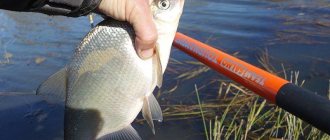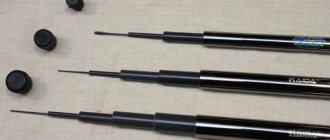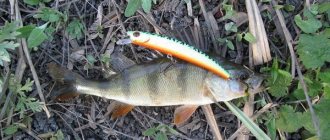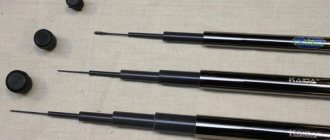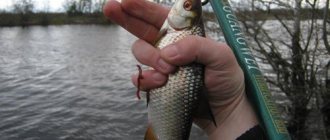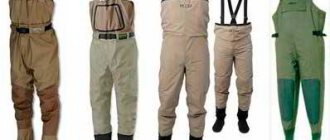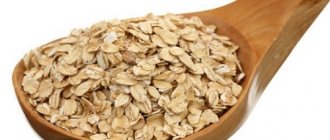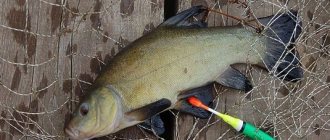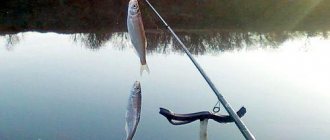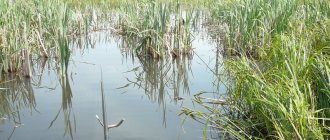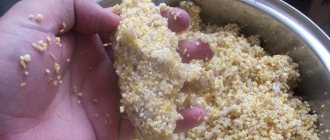September, especially its first half, often delights with truly summer weather. In such conditions, the bream remains active enough to count on the desired fishing outcome.
During this period, it is already beginning to slowly prepare for the winter and accumulate fat reserves, delighting anglers with, albeit infrequent, but confident bites. Fishing for bream in September is also attractive for many white fish hunters because it is in this month that the chances of catching a real trophy increase.
Behavior of September bream
The peak activity of this representative of the ichthyofauna occurs in the first days of the month. He doesn’t know what a calendar is, but he already feels the cold weather approaching, so he feeds intensely, sometimes forgetting about caution. During the day, when the air temperature rises to 20 degrees, schools of bream begin to move throughout the water area in search of food. Most often they move along the edges, picking up any food that comes their way. If there is not enough food at depth, bream move closer to the shore, so bites are also possible in the shallows or near coastal vegetation.
Breamers note that large bream are more often caught in the first half of the day, while their medium and small relatives (bream) can be caught well until the evening. Perhaps the reason is that the big fish has no food competitors. She eats her fill early and goes to rest.
As the temperature drops, bream becomes less and less interested in plant baits and gives preference to protein foods - larvae, mollusks, and worms. On cold days it is better to offer him fresh moving bait. For example, a red worm or a bunch of maggots. The same goes for the groundbait mixture. A large number of animal components in the bait will help keep the fish on the spot.
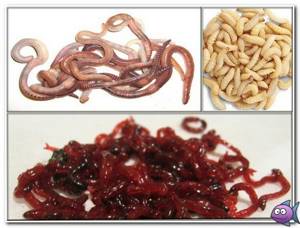
Feeder lovers - go for night fishing
Bream love warm weather. Therefore, when they feel a drop in temperature, they try not to swim to the shores at all. And if windy and cloudy weather is expected, the bream may stop biting altogether. This fact must be taken into account in accordance with the weather for tomorrow. Night fishing is the best that an angler can expect when he is “hunting” for bream or bream. The most active bite is observed in the evening, before sunset and at dawn.
Lakes and reservoirs are excellent places to catch bream at night. In still water, as a rule, bream are calmer, and you can catch a trophy specimen. It would be good to arrive at the rates 2 hours earlier than your planned vacation, or rather sports feeder fishing, in order to explore the place. A marker weight lowered to the bottom will help you navigate in the depths; such a bottom examination has a good effect on further fishing. You can use a shore echo sounder to check the depth.
Fishing place
The outcome of fishing largely depends on the choice of location. You can try to catch bream anywhere, in very different sections of the river, but the results will also be different. Beginners usually do this, and then cannot understand why seasoned fishermen always have a catch, but for them fishing is like a lottery: yesterday they were lucky, but today the cage is empty. Choosing the right fishing location is an almost 100% guarantee of success.
Where to look for bream in September? Until about the middle of the month, most often it is possible to detect a flock in areas with a depth of 3-5 meters with a relief muddy bottom. In the chosen location, the bottom soil must be marshy, since this fish does not linger above a hard surface. The diet of bream is based on various living organisms living in the bottom soil, so it has nothing to do on sand or pebbles.
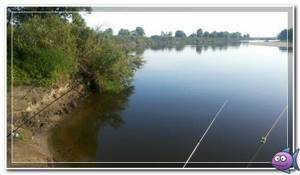
First of all, you should try to fish in areas with an uneven bottom surface streaked with irregularities, as well as near holes and pools with a depth of 3 meters. In the first half of September, large bream are often caught in such places. Smaller individuals and undergrowth, driven by hunger, come close to the coastline. They can be successfully caught in an overgrown coastal zone, where there are a lot of small animals and the older ones do not interfere with fattening up.
Towards the end of September, when the nights are already really cold, and the day is no longer so hot, bream gather in large groups and gradually move towards the wintering pits. During this period, the entrances and exits will be promising for fishing. Near the shore, bites are also possible, but only in warm shallow water on sunny days.
It should be noted that trying to catch September bream in the upper and middle horizons is a futile exercise. This is a bottom-dwelling fish that spends most of its life at the very bottom, and in the fall it will definitely not rise to the top.
Autumn baits for bream
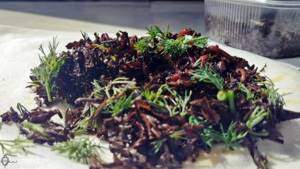
Autumn is the time for animal baits. A large worm, a bunch of bloodworms, several maggots - these are the main baits for catching bream. If the bite is weak, you can experiment with so-called “sandwiches” - maggot with bloodworms, maggot with a worm, etc.
Among the herbal attachments, the best would be mastyrka made from peas and semolina, flavored with honey, cake, vanilla, garlic, and dill oil. Where there are voracious gobies, prickly ruffs and other “harmful” small things that eat worms, it makes sense to try to catch them.
Fishing on a feeder
Feeder tackle or English donka will be the best tool for fishing for bream in September on the river. It allows you to make long casts and catch promising points located at a considerable distance from the shore. A bream feeder usually consists of the following elements:
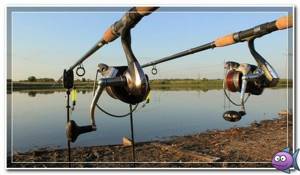
- medium or heavy class rods with top weight up to 120 g, length 3.9 meters (for fishing on small rivers - 3.3 m);
- a spinning reel with a reduction of 5:1 or 5.2:1 (spool volume – 2500-4000);
- braided cord 0.14-0.20 mm or monofilament 0.25-0.35 mm (thickness depends on conditions and expected size of the fish);
- feeder installation with a feeder.
Catching bream on a feeder begins with examining the bottom in a selected place using a marker sinker. By dragging it along the bottom surface, you can determine the nature of the bottom, namely the presence of edges, depressions and other irregularities, so that you can then throw the bait to a promising point.
At the second stage, starting feeding is carried out - throwing 10-12 full feeders of bait. To save time, you can use a special large-volume feeder. In this case, you will need to make half as many casts.
Now you can put up a regular feeder, tie a leash with a hook and start fishing. After the first cast of the rig with bait, it is important to tighten the line so that the tip is slightly bent. This is necessary for better fixation of bites.
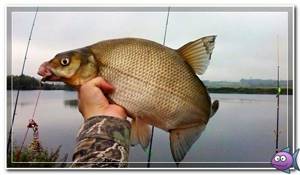
In September, bream bite differently, depending on the degree of activity. If the fish is not hungry and approaches the bait only out of curiosity, the rod tip can only twitch. Hooking it with such a bite is very problematic. It’s another matter when the bream has just come out to feed and is ready to eat everything that the river or the fisherman offers it. In this case, the bites are such that the tackle flies off the stand. The handsome river fish swallows the bait deeply, is reliably hooked and safely ends up first in the landing net, and then in the cage.
Basic gear - what to stock up on?
Of course, fishing with a feeder requires special equipment, or rather, equipment. And even if you plan to catch white bream, you should take care of your gear in advance by purchasing the right fishing line, reel, hook and feeder.
First of all, you need a feeder rod with a length of at least 3-4 meters (for long casts and deep fishing spots). Why exactly this size? The fact is that with a large rod it is easier to lift the feeder from the bottom, this eliminates the possibility of mud getting tangled on the hook. You should choose a medium type of rod, since it is specifically designed for catching bream in a reservoir or on a river in the absence of a strong current.
Casting such a rod near bushes, trees and reeds is not entirely convenient. But, as they say, the fish looks for a place where it is better, but does not ask the fishermen for permission. But if you manage to choose a cleared place with a deep cliff, then you can go fishing with special pleasure, without the risk of injuring yourself and the fishermen nearby. So, deviating a little from the topic of gear, let's continue. Required accessories for feeder:
- Coil. An inertia-free one with a well-tuned clutch (size 3000-5000) is suitable. The baitrunner system is necessary for sharp bites in order to protect yourself from troubles with the fishing line getting tangled.
- Fishing line. For short casts up to 50 meters, monofilament is better; it is stronger and thinner at the same time, with a diameter of about 0.25. For long casts, braid with a diameter of 0.1-0.16 is suitable. Be sure to use a leash, it will increase the number of catches. Bream is a shy fish.
- Hook. To catch bream, choose a small hook size: approximately from No. 7 to No. 9 for baiting worms and No. 4 - No. 6 for baiting pearl barley and corn. The hook must be of high quality and very sharp.
- Feeder. Its weight should not be more than 100 grams, especially if you are fishing with a light or medium-type feeder rod on the river. When fishing on the lake, use light weight feeders.
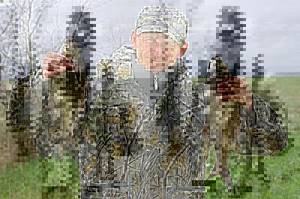
The feeder should be selected depending on the weight of the feeder rod. It indicates the weight and possible type of cargo. For example, when using a Medium rod, the load together with the feeder should not exceed the weight of 80 grams. Otherwise, there is a high probability of the rod breaking, and less weight, accordingly, will have a bad effect on the sensitivity of the bite beacon.
The bream bite occurs with a smooth approach up and out to the right or left. The bream tries to escape in this way. This is the main pronounced characteristic of the bream bite. You need to hook with a firm hand, sharply and carefully. The tender lip of the bream may tear at this moment. Then you need to smoothly fish the fish towards the shore, using jerky tactics, stopping each time, but without significantly weakening the line. The main thing when catching bream is to use a cage; you cannot pull it ashore, otherwise there is a high risk of failure.
How to choose bait for bream
Spring bait
To fish in reservoirs with a current, it is necessary to add viscosity ; for this, clay from the reservoir and pea flour are used. Fraction : small, but always with the addition of large pieces of live maggots and food bloodworms. Color : light Smell : coriander is the best option Additives to attract large fish: instant corn, crushed peas, scalded maggot
Summer baits
In the summer heat, many complain about a complete lack of bite , but this is not always true. Properly selected bait can attract the attention of bream even in the heat. June: worm, maggot, corn, peas, pasta. July: steamed barley, maggot worms in the form of sandwiches. August: bread, pasta, corn, maggot worm. Temporary decreases in temperature indicators will entail a return of bream to animal types of bait ; vegetable bait should be offered in hot weather.
Autumn lures
In the autumn, bream continue to be actively caught on the feeder; groundbait and bait, as before, should work in tandem in such gear. As the temperature drops, bream will again want “meat” baits. September: earthworm and dung worm, maggot, hominy, bread, steamed cereals. October: bloodworms, worms, less often maggots. November: maggots and bloodworms, plant-based baits will not work. It is important to understand that the bait used in crushed form must be added to the bait.
Winter lures
In winter, bait for bream is very important; it is more difficult for passive fish to attract attention . Therefore, the selection of bait should be approached very carefully. December: sandwiches made from pieces of worms, bloodworms and maggots, less often boiled peas are used. January: bloodworm, worm. February: worm, bloodworm, semolina, peas. You can experiment and try using the dough as bait; at the end of February, bream can respond well to this species.
Fishing with a float
An ordinary float rod (fly rod) has proven itself well in fishing for bream in deep river bays and flowing lakes. The fishing rod for this type of tackle is strong and long, at least 6 meters. You can fish with a fishing rod under steep banks, where the depth begins almost immediately and there is a possibility of a school of bream approaching. However, it is not enough to find such a place. To keep the fish at the point, it must be thoroughly fed. To do this, it is enough to mold and throw several weighty balls of bait into the water. If the bream is active and visits this area of the reservoir in search of food, the first bite can occur within 15-20 minutes.
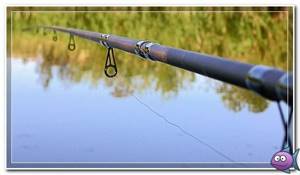
It is important that all equipment elements are as invisible as possible in the water. In autumn it is more transparent than in summer, so a thick, coarse fishing line or a huge float can alert the fish, and it will not dare to approach the bait. A strong monofilament with a diameter of 0.20-0.22 mm is used as the main line, and for a leash it is better to take an even thinner one - 0.14-0.16 mm. Depending on the casting distance, floats weighing from 2 to 10 g with long antennas are used. It is desirable that the hooks are thin and sharp. Bait strung on such a hook remains alive, active, and therefore attractive for a long time.
With a float rod you can successfully catch September bream both in calm areas and in small currents during the retrieve. If the angler is lucky enough to find a bream trail and manages not to scare the school, a good catch is guaranteed.
Feeder fishing for bream - casting technique
You shouldn’t rely on chance and sit near the rod for hours hoping for a bite. This is not float fishing, but sports feeder fishing. Therefore, every half hour, experienced fishermen advise changing baits and repeating the cast. And you can feed the point once a minute. For beginners, it is better to practice casting. Almost no one can show in a photo the correct casting without sudden jerks. But the video will help a novice feeder amateur to cast the tackle correctly.
You need to remember that bream does not like to bite in different places, so the cast must be repeated in the same place. Having determined the accuracy with the weight, it is necessary to clip the fishing line, and then repeat casts precisely to the area of the edge or the cliff where the fisherman plans to get a bite.
Ring fishing
Fishing for bream using a ring rod requires some experience and skills. This type of gear is used exclusively from a boat. The rod uses a short (side) rod, the upper part of an old spinning rod is also suitable, some even use winter “sticks”. The equipment is a rather complex structure in which a lead ring with leads and hooks is lowered to the bottom along a cord. At its opposite end there is a voluminous feeder thrown into the water, filled with an appetizing mixture. In this case, the main line passes through the hole in the ring and is tied to the tip of the rod, thanks to which the fisherman sees the bite. To better secure it, a long guard is installed on the tip of the fishing rod. It is a guard, and not a bell and other sound alarms, so as not to frighten the cautious bream.
The most difficult thing about ring fishing is lowering the ring itself with leads and hooks. It is important to do this so that the leashes reach the very bottom safely and do not get tangled. This casting is done using a rod and reel. By the way, a simple inertial reel is suitable for ring fishing.
As mentioned above, the tackle is used only from a boat. It is relevant in those periods when the bream stays far from the shore (stands on holes), and there is no other way to get to it.
Baits and lures
In September, bream begins to be capricious, so choosing food that he cannot refuse is not as easy as it seems. In the first half of the month, vegetable baits such as peas, corn, pearl barley, mastyrka, store poufs, and mini boilies are still working. However, as the average daily temperature decreases, he pays less and less attention to them, giving preference to living creatures. You can try to tempt him with an earthworm or dungworm, a few maggots or a bunch of bloodworms.
If there is no bite, you will have to experiment with baits, choosing the appropriate option. Many breamers are successfully caught in early autumn using various combinations of plant baits and bait. Dips and other flavoring substances also sometimes help out.
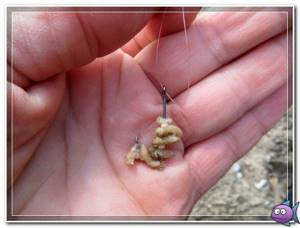
Features of autumn fishing
Warm, calm days in the first month of autumn are the time to go fishing. The nights become long and cool, and the water temperature gradually drops. Fishing for bream in the fall becomes very exciting. The fish actively feeds, replenishing fat reserves in the body for the long winter. In addition, autumn bream becomes quite valuable in a gastronomic sense. The meat becomes tender and juicy, and the belly becomes fatty.
If in spring and early summer bream can be found in small rivers, then in autumn the fish migrate to large bodies of water.
Autumn provides an excellent chance to catch a real trophy; large fish bites are sure. Keep the landing net spread out at hand.
Feeding September bream
An experienced bream fisherman feeds the place even before fishing, for example, a day or two. The fish gets used to the fact that food constantly appears at a specific point in the reservoir, and hunger forces it to return here again and again. This is already fifty percent success.
What to attract bream in September? Just as during almost the entire open water season, homemade porridges based on peas, millet, and crackers remain effective. As for additional flavoring ingredients, every experienced fisherman has his own secret recipe. Beginners should know that in the fall they should not get carried away with too strong odors, they can have the opposite effect.
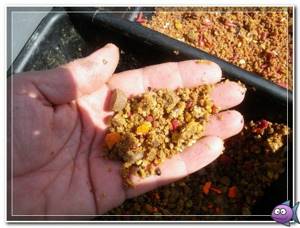
When fishing with a feeder, many people use ready-made industrial baits. You can also add peas, corn or some other nutritious component to them in order to increase the attractiveness of the mixture. What exactly to add depends on the reservoir and the food preferences of the bream living in it. In the second half of September, livestock will be an obligatory component: maggots, bloodworms, crushed worms. Usually the picture becomes clearer after several experiments with the composition, it becomes clear what the fished object responds to better.
Bait for bream in September
Peas mixed with chopped animal bait are a good base for bait. All that remains is to figure out how to cook peas for fishing and stock up on other ingredients: millet, chopped worms, small bloodworms, ground crackers, flavorings. The bait is prepared directly on the pond, so you need to provide appropriate utensils.
Before you start baiting, you need to conduct a reconnaissance of the topography and bottom conditions. The presence of mud indicates that there are no bream in this area. It is most often found in deep, large-area holes and loves a silty bottom. The use of bait can attract bream to the baited area for a long time.
